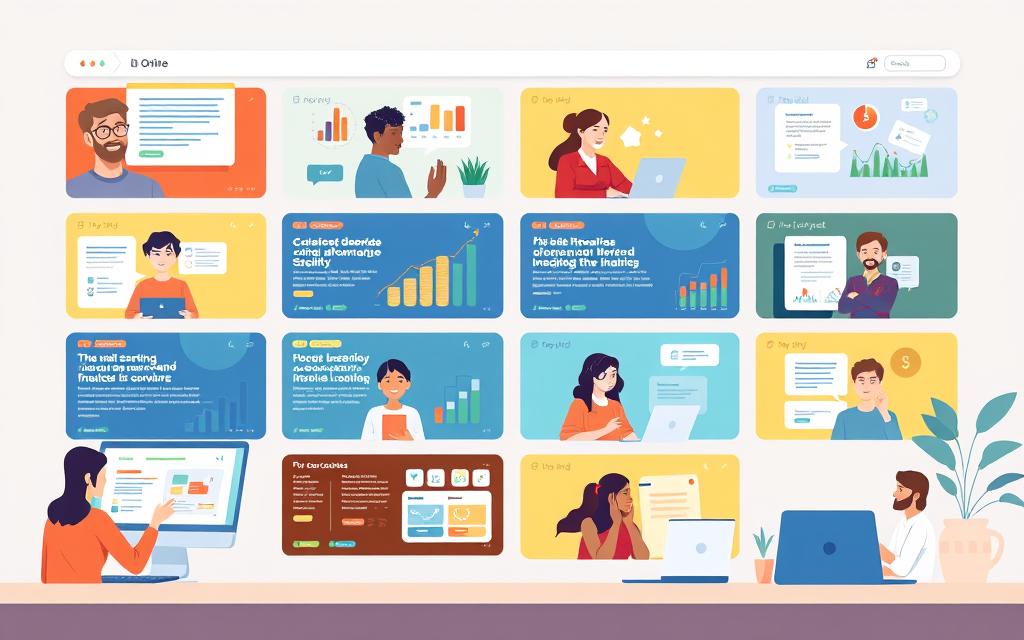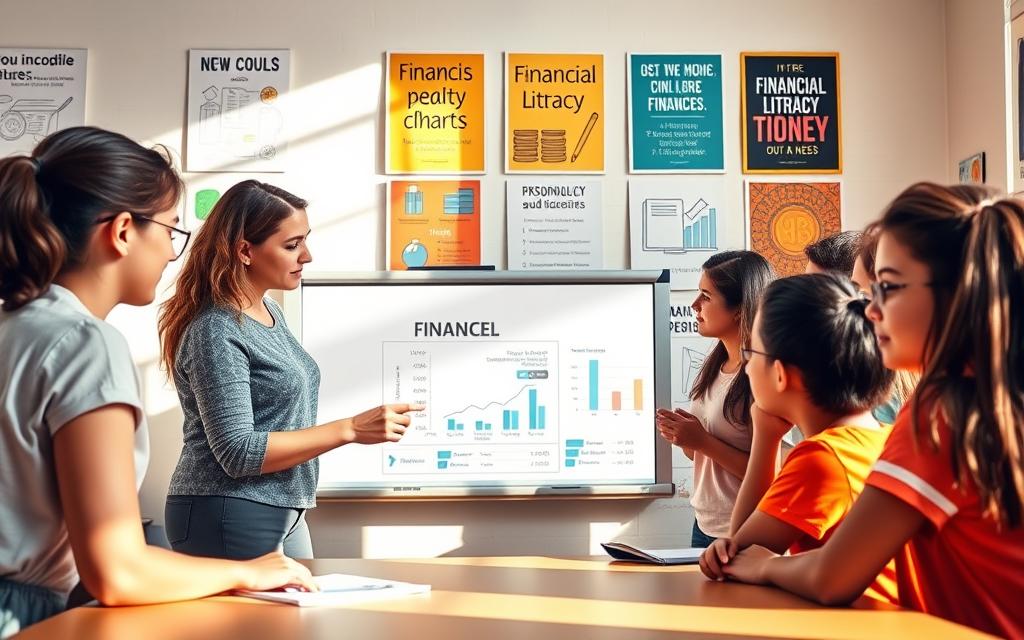In today’s rapidly evolving world, financial literacy has emerged as a critical life skill. As economies become increasingly complex, individuals need to be equipped with the knowledge and tools to make sound financial decisions.
The application of technology to learning has enhanced financial education considerably by making it highly accessible, efficient, and engaging. Visual data representation through technology enhances students’ understanding of complex financial concepts.
By making financial literacy more accessible and personalized, technology bridges traditional educational gaps. This sets the stage for a deeper exploration of specific technological approaches to financial education throughout the article.
The Growing Importance of Financial Literacy for Students
Financial literacy is becoming increasingly crucial for students as they navigate their financial lives. It encompasses a range of skills, including managing finances, making informed spending choices, understanding credit basics, and recognizing the importance of saving for the future. These skills are essential for leading a financially secure and independent life.
Current Financial Literacy Challenges Among Students
Many students lack the necessary financial literacy skills, leading to poor financial decisions. Concerning statistics highlight knowledge gaps in budgeting, saving, and understanding credit. For instance, a significant number of students are not aware of the implications of high-interest debt or the benefits of early saving.
How Technology Bridges the Financial Knowledge Gap
Technology provides innovative solutions to financial literacy challenges by making financial education more accessible and relevant. Digital tools offer real-time, practical financial education that connects to students’ everyday experiences. By leveraging technology, financial knowledge becomes more democratized, breaking down barriers that previously limited financial education to certain demographics.
Interactive technological approaches address different learning styles, helping diverse student populations grasp financial concepts more effectively. This prepares students for an increasingly digital financial world where traditional financial literacy alone is insufficient.
How Does Technology Help Students Learn Financial Literacy Graph
Technology is revolutionizing financial literacy among students by providing interactive and visual tools. The use of graphical representations is transforming abstract financial concepts into tangible, understandable information for students.
Visual Data Representation in Financial Education
Visual data representation plays a crucial role in enhancing students’ understanding of financial concepts. Graphs, charts, and infographics help students visualize financial growth concepts like compound interest, making complex ideas more accessible. For instance, graphical representations can illustrate how small, consistent savings can grow over time, demonstrating the power of long-term investing.

Interactive Charts and Graphs for Budget Tracking
Interactive budget tracking tools with visual components allow students to see the immediate impact of their financial decisions through dynamic graphs and charts. These tools create “aha moments” for students by illustrating the long-term consequences of financial choices. For example, students can adjust hypothetical budgets and see how different allocations affect their savings goals.
Data Visualization Tools for Investment Concepts
Investment simulation platforms use data visualization to demonstrate concepts like risk diversification, market volatility, and portfolio performance. Color-coded graphs and visual cues help students identify patterns in financial data that would be difficult to recognize in numerical format alone. By engaging with these tools, students can develop a deeper understanding of investment strategies and risk management.
Digital Platforms Revolutionizing Financial Education
The advent of digital platforms has transformed the landscape of financial education for students worldwide. Technology has increased the accessibility of financial education via the Internet, allowing students to study from anywhere.
Online Learning Platforms and Financial Courses
Online learning platforms offer comprehensive financial courses that cater to students of various age groups and educational backgrounds. These platforms provide diverse learning materials, enabling learners to acquire financial education without spatial or temporal limitations.

Mobile Apps for Budgeting and Money Management
Mobile apps assist users in managing money, monitoring expenses, and learning about finance using interactive tools. These apps have transformed everyday money management for students, providing real-time budgeting tools and expense tracking.

Simulation Tools for Real-World Financial Scenarios
Simulation tools create safe environments for students to practice financial decision-making, allowing them to experience consequences without real-world risk. These tools use real-world scenarios to contextualize financial concepts, making abstract ideas concrete and applicable to students’ lives.
By leveraging these digital platforms, students can gain practical experience in financial management, preparing them for real-world financial situations. The use of digital platforms in financial education is revolutionizing the way students learn about money management, budgeting, and financial literacy.
Gamification: Making Financial Literacy Engaging
The integration of game-like features in financial literacy programs is enhancing student engagement and knowledge retention. Gamification involves applying game design and mechanics to non-game contexts, such as financial education, to make learning more interactive and enjoyable.
Financial Literacy Games and Their Impact
Financial literacy games are designed to teach complex financial concepts through play-based learning. These games are tailored for different age groups and have been shown to be effective in improving financial knowledge. By making learning fun, students are more likely to engage with the material and retain the information.
Achievement Systems and Progress Tracking
Achievement systems and progress tracking are key elements of gamification that motivate students to continue their financial education journey. By earning rewards and badges, students experience a sense of accomplishment, which encourages them to learn more. This positive reinforcement loop helps to foster a deeper understanding of financial concepts.
Competitive Elements in Financial Education
Competitive elements, such as leaderboards and challenges, tap into students’ natural desire for achievement and social recognition. By incorporating these elements, financial literacy programs can create a more engaging and interactive learning environment. This encourages students to develop healthy financial habits and make informed financial decisions.
| Benefits of Gamification | Description |
|---|---|
| Increased Engagement | Gamification makes financial literacy more enjoyable and interactive. |
| Improved Knowledge Retention | By making learning fun, students are more likely to retain financial information. |
| Enhanced Motivation | Achievement systems and competitive elements motivate students to learn more. |
“Gamification has the potential to revolutionize financial literacy by making it more accessible and enjoyable for students.”
By leveraging game-like features and interactive elements, financial education can become more effective and engaging.
Personalized Learning Through Financial Technology
Technology is making financial education more accessible and personalized for students. By leveraging adaptive learning software, financial literacy education can be tailored to individual needs, enhancing the learning experience.

Adaptive Learning Systems for Individual Needs
Adaptive learning systems assess a student’s strengths and weaknesses, adjusting the content to address specific needs. This personalization allows students to progress at their own pace, reinforcing key concepts and addressing deficiencies.
Real-Time Feedback and Performance Analytics
Real-time feedback mechanisms and performance analytics provide immediate insights into a student’s understanding of financial concepts. This data helps identify areas for improvement, enabling students to manage finances more effectively.
Conclusion: The Future of Technology in Financial Education
The future of financial education is being reshaped bytechnology, offering new and innovative ways forstudentsto learn aboutfinancial literacy. As we’ve discussed, various technological approaches have collectively transformed financial education, making it more accessible and effective. Emerging technologies like virtual reality, augmented reality, and blockchain are poised to further revolutionize howstudentslearn financial concepts. By integrating financial technology education, we can preparestudentsnot just for personal finance management but also for careers in the evolving financial services industry. It’s essential to balance technological tools with human guidance, emphasizing the continued role of teachers, mentors, and parents in financial education. For more information on the impact of technology on financial literacy, refer to thisstudy. As we move forward,technologywill continue to democratize access to financial knowledge, potentially reducing socioeconomic disparities and creating a more financially literate generation.







